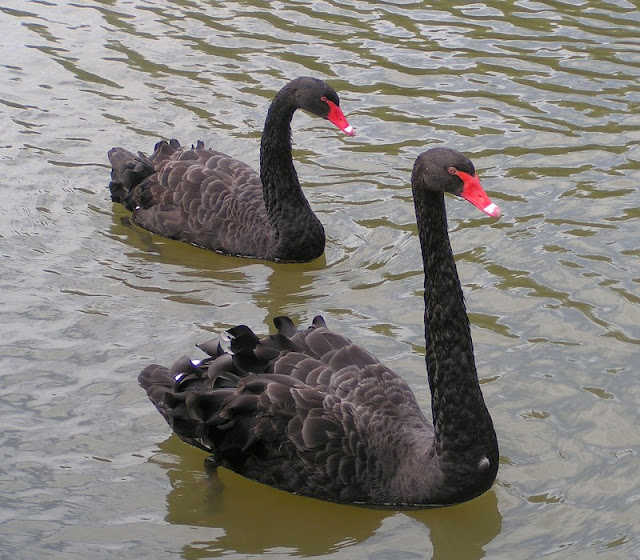The Life of Animals | Black Swan | Black swans, primarily black-feathered birds with white feathers. Cygnets (immature birds) are a greyish-brown with pale-edged feathers. Mature Black Swan measures 110-142 cm (43 and 56 inches) in length and weighing 3.7 to 9 kg (8.2 to 20 pounds). The neck is long (relatively long neck swans) and curved in the "S" shape. Black Swan says the musical and far reaching bugle sound, called either on the water or in the air, and a number of soft humming note. When swimming, Black Swans hold their necks arched or erect, and often carry their feathers or wings raised in an aggressive display. Black Swan is unlike any other Australian bird, but can be confused in flight in low light conditions and at great distances from the Magpie goose can. However, Black Swan can be distinguished by a much longer neck and slower wing beat
Before the arrival of the Maori in New Zealand, a subspecies of Black Swan, as the New Zealand Swan became known in the islands, but it was obvious exterminated. In 1864, the Australian Black Swan was introduced to New Zealand as an ornamental waterfowl, and populations are now at large coastal or inland waters, especially in the Rotorua Lakes, Lake Wairarapa and Lake Ellesmere, and the spread of Chatham Islands. Black Swan is almost exclusively herbivorous, and while there are some regional and seasonal changes, diet, usually caused by water and marsh plants dominated. The exact composition varies depending on the water level at high tide, where normal foods are out of reach Black Swans will feed on pasture plants on shore. The Black Swan feeds in the same way in the other swans.
Black Swans are also able to filter feed on the surface, like the other swans, black swan mostly monogamous, mating for life (about 6% divorce rate). Typically, black swans nest in wet winter (February to September), sometimes in large colonies. Black Swan nest much larger heap or mound of reeds, grasses and weeds between 1 and 1.5 meters (3-4 ½ feet) in diameter and up to 1 meter in shallow water or on islands nest again every year, restored or rebuilt as necessary. Both sexes incubate the eggs, with the female incubating at night. If the egg is accidentally roll out of the nest egg of both sexes from the neck (in other swan species only the female performs this feat).
Like all swans Black Swans will actively defend their nests with their wings and beaks. After hatching, the young swans caring parents for about 9 months before the tail. Cygnets may return to their parents for longer trips into deeper water, but Black Swans undertake this behavior less frequently than Mute and Black-necked swans. Black Swan was a literary or artistic image, even before the opening of Cygnus atratus. Black Swan on the flag and the functions of both the state and bird emblem of Western Australia, it also appears in the coat of arms and other iconography of the state institutions.
Find The Life of Animals















Post a Comment